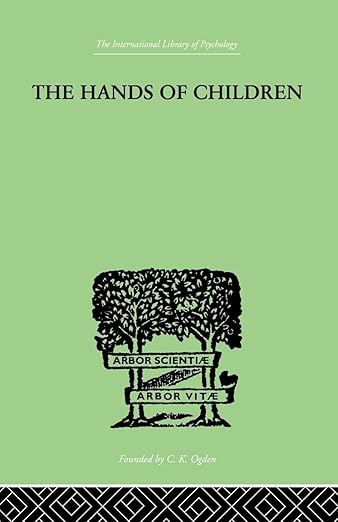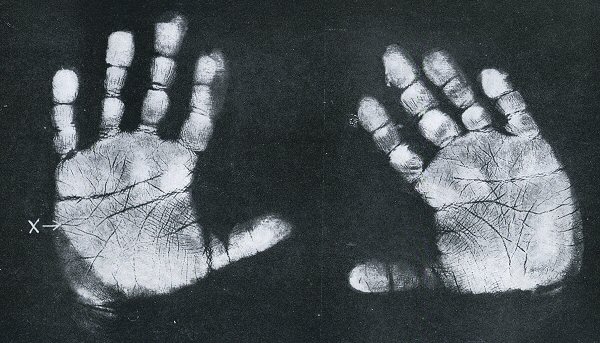
French version of this book presentation
Context of the Work and the Author’s Intention
Published posthumously in 1944, The Hands of Children is the only complete work left behind by Julius Spier—a psychoanalyst, Jung’s student, and a pioneer in the field of psycho-chirology. This little-known discipline explores an individual’s character and psychological development through the detailed study of the hands. Spier had planned a trilogy, with additional volumes devoted to the hands of adults and those with mental disorders. His untimely death, however, left these projects unfinished, making The Hands of Children the primary testament to his method and ideas.
An Anti-Divinatory Approach: Understanding, Not Predicting
The central aim of the book is to show how the basic psychological traits of an individual—especially a child—can be observed in the shape, structure, and lines of the hand. Julius Spier takes a firmly anti-divinatory stance, drawing a clear line between chirology—a psychological and empirical method—and palmistry, which he criticizes as rigid, speculative, and lacking scientific credibility. For Spier, reading the hand is not about foretelling the future, but about uncovering psychological tendencies, blockages, and potential. In doing so, it becomes a tool for supporting more conscious, just, and liberated personal development.
Why Focus on Children’s Hands?
A key aspect of Spier’s approach is his focus on childhood. He believed that a child’s hand provides direct insight into their natural dispositions—before these are altered by education, society, or later trauma. According to Spier, even from as early as one year old, the lines and shapes of a child’s hand reveal dominant traits such as emotional tendencies, unconscious drives, developmental potentials, and obstacles. This understanding can serve a preventative purpose, helping parents, educators, and therapists support the child’s growth in a way that honors their true nature.
A Critique of Parental Projection
Julius Spier goes further by critically examining the unconscious projections parents place on their children. Too often, children become a stage for parents to compensate for their own frustrations. Rather than helping the child become their true self, adults unconsciously try to shape them into what they themselves wished to be. According to Spier, psycho-chirology allows us to break this vicious cycle. It uncovers intergenerational tensions and transmission conflicts, giving the child a chance to develop according to their own dispositions—not according to external expectations.
A Detailed and Rigorous Psychological Method
The methodology developed by the author is based on a detailed analysis of many elements: the overall shape of the hand (conical, spatulate, rectangular, etc.), the texture of the skin, the position and proportion of the fingers, the major and minor lines of the palm, as well as the differences between the left and right hands. In his view, the right hand generally represents the family heritage—what he calls the ancestral hand—while the left hand reflects the developing individual personality. One of his major contributions is integrating this analysis with concepts from Jungian psychoanalysis, notably the distinction between extroverted and introverted personalities and the significance of the collective unconscious.
Rejecting Predictions: Restoring Inner Freedom
Rejecting any form of prediction, Julius Spier emphasizes a psychodynamic approach: the hand must be read as a living, changeable structure. He is cautious of any fixed or fatalistic interpretations. Reading a hand is not about setting a destiny in stone; it’s about raising awareness of possibilities and giving the individual—child or adult—the freedom to reconcile with their true self. For this reason, he places great importance on the ethical responsibility of the practitioner: they must understand their own limits, recognize their unconscious projections, and be rigorously trained to avoid causing harm to those they support.

Plate IX
Case Studies: Children’s Handprints as a Psychic Mirror
In the final section of the book, Julius Spier presents detailed analyses of 23 children’s handprints, which he discusses with a clinical and educational approach. These examples reveal the connections between the visible features of the hands and family conflicts, educational tensions, psychological struggles, or suppressed talents. Through these cases, it becomes clear that his goal is not to lock children into a diagnosis, but to open a path toward greater self-awareness—and, above all, to help the adults around them adjust their perspective and actions accordingly.
A Humanist Vision of Development
Beyond its technical analysis, The Hands of Children is above all a call for understanding and transformation. Julius Spier develops a humanist vision of personality development, deeply influenced by Jung yet enriched by his own clinical experience. Here, the hand becomes a mirror of the soul—a reflection that is biological, psychological, and symbolic—and something we can learn to read—not to predict, but to guide and support.
Publisher: Routledge – 2018 – 280 pages – ISBN 978-1138875449 – 138 x 216 x 15.3 mm
Julius Spier

Julius Spier (1887–1942) was a German psychoanalyst, a student of Carl Gustav Jung, and the founder of psycho-chirology. Originally a businessman, he later dedicated himself to exploring the connections between psychological traits and the characteristics of the hand, developing a unique approach that blended analytical psychology with empirical observation.
His relationship with Etty Hillesum—as her therapist and later close companion—was deeply significant, as reflected in her diaries (An Interrupted Life: The Diaries of Etty Hillesum, 1941–1943), written before her deportation to Auschwitz. Julius Spier died in Amsterdam shortly before the publication of his only major work, The Hands of Children.
